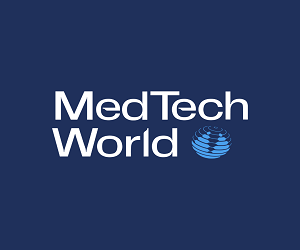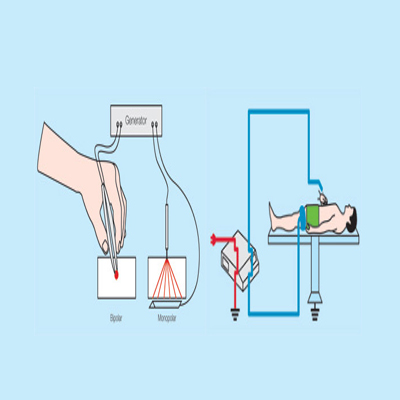Solve Legacy Healthcare Data Integration Issues with Cloud Platforms

Healthcare organisations are looking to innovative digital technology to streamline clinical workflows, improve patient care and boost business performance. However, legacy IT systems and practices often stand in the way and make deploying new digital healthcare solutions across the enterprise daunting.
Fortunately, help is on the way. Forward-looking health IT leaders are turning to a new generation of cloud-based data integration platforms to simplify operations, overcome staffing challenges and accelerate innovation.
Legacy data integration issues
Healthcare IT environments are notoriously fragmented. Until recently, there were no widely adopted, universal standards for formatting and exchanging healthcare data. Each healthcare application vendor and system provider took a different approach. In response, most healthcare organisations implemented point-to-point connections or deployed on-premises data integration engines to transform and route dissimilar data from disparate sources.
Driven partly by government health data sharing initiatives, HL7® FHIR® is emerging as an industry-standard data exchange format. However, most major healthcare organisations still rely on aging on-premises integration platforms that impair application performance and are difficult and expensive to scale and maintain.
To make matters worse, many healthcare IT departments are plagued by staffing shortages. Hiring and retaining IT talent is a challenge. Millions of people around the world quit their jobs in 2022 as part of the “great resignation”, and healthcare organisations were hit particularly hard. Today, many healthcare IT teams struggle to do more with less and don’t have the time and resources to administer and extend their legacy data integration systems.
Not surprisingly, 90% of healthcare executives want to change their existing data exchange mechanisms, according to a recent study of 240 healthcare executives, The ANZ State of Healthcare Analytics & Interoperability Study 2023-24, conducted by tech advisory firm Ecosystm for InterSystems.
Cloud-based data integration platforms
One solution is a healthcare cloud integration platform. This state-of-the-art data integration solution is delivered as a remotely hosted, fully managed service for ultimate operational simplicity, agility and economics. It helps organisations to streamline integration efforts and address new business, technology and regulatory requirements – quickly, efficiently and cost-effectively.
Specifically conceived as a platform as a service (PaaS) offering, a cloud integration platform is built from the ground up with speed, resiliency and scalability in mind. It is also designed to protect data privacy, is equipped with easy-to-use tools for interface analysts and app developers, and it is backed up by service level assurances for peace of mind.
A typical healthcare cloud integration platform provides all the features and functions of a traditional on-site healthcare data integration solution, including built-in data transformation libraries and graphical user interfaces for app developers and integration specialists.
However, cloud integration platforms differ from traditional on-premise solutions in many ways. For example, they will include the cloud compute, storage and networking resources needed to support each customer instance at whatever scale and speed is required.
They will also typically provide sophisticated cybersecurity functions, including comprehensive identity and access management controls, threat detection and response capabilities, and data encryption functionality. And they will support high availability with automatic failover capabilities.
Why a cloud integration platform?
Cloud integration platforms offer a variety of economic and operational advantages compared to traditional on-premises data integration solutions. A cloud platform can help organisations accelerate time to value and avoid lopsided business models with long payback periods. With a cloud platform, you can eliminate capital outlays and tightly align ongoing operations expenses with evolving business requirements.
It can also help organisations to simplify IT operations and speed up innovation. With a cloud platform, the service provider takes care of the underlying infrastructure. The customer organisation’s internal resources stay focused on core business imperatives like writing interfaces or rolling out new clinical applications. Benefits include:
- No capital equipment expenses. With a cloud platform, the service provider owns the underlying compute, storage, networking, and security infrastructure.
- Lower ongoing operations expenses. The service provider is responsible for all infrastructure administration, support and maintenance, and all physical space, power and HVAC costs.
- No idle resources or squandered capacity. A cloud platform provides pay-as-you-grow scalability. With an on-premises approach, you must overprovision compute and storage capacity to support future requirements.
- Greater IT productivity. A cloud platform can help alleviate IT staffing challenges and reallocate personnel and budget for more strategic tasks.
- Inherent extensibility. Cloud platforms are adaptable and future proof. Service providers deliver new features and functions without disrupting service.
- Economical geo-redundancy. Cloud platforms support cost-effective failover across data centres (availability zones), ensuring continuous service in the event of a catastrophe.
Building a business case for cloud integration
A cloud integration platform is an obvious choice for an organisation deploying a data integration solution for the first time – that is, a greenfield deployment. But most major healthcare organisations probably already have at least one, or even many, data integration solutions in place. Does a new cloud integration platform make good financial sense? Or are you better off trying to extend your existing on-premises solution? You’ll need to do a total cost of ownership (TCO) analysis to find out.
When building a business case, be sure to consider intangible expenses. Planners often overlook indirect expenses like opportunity costs. For example, legacy system administration and maintenance burdens can divert valuable IT resources from other projects that might improve patient care in ways that are difficult to quantify. Similarly, legacy system performance constraints can hinder clinical workflows and impair patient satisfaction and retention in ways that are difficult to measure.
Assigning a dollar value to some of these nebulous costs might be difficult, but you can’t simply ignore them. They represent the hidden expenses of maintaining the status quo and are crucial for understanding the true total cost of ownership.
To help you get started, InterSystems has developed a healthcare cloud integration platform decision guide, including a detailed TCO comparison chart. This is available at: https://www.intersystems.com/business-case-healthcare-cloud-integration.pdf/.
Maybe it’s time to take a fresh look at your approach to data integration. A healthcare cloud integration platform can help you streamline integration efforts, boost application performance and availability, and free up resources to support core business initiatives.

About: Andrew Aho - Regional Director for Data Platforms, InterSystems
Andrew Aho Andrew Aho is Regional Director of Data Platforms in Australia and New Zealand for InterSystems, the leading provider of next-generation solutions for enterprise digital transformations in the healthcare, finance, manufacturing and supply chain sectors. Aho has more than 20 years’ executive and sales leadership experience in the enterprise technology industry. At InterSystems he works across digital healthcare, commercial and government organisations to develop innovative solutions which leverage data, interoperability, analytics, AI and automation technologies to drive competitive advantage, performance and improve service delivery. In previous roles, Aho has been responsible for the success of customers deploying healthcare information systems, and for business across Asia Pacific.







